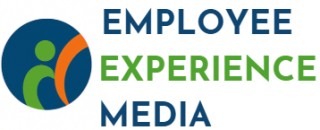
Understanding the integrated leadership system
What Makes Leadership Integration Essential?
In today’s organizations, leadership is more than just a role—it’s a system that connects people, goals, and strategies at every level. An integrated leadership system (ILS) is a structured framework that brings together leadership capabilities, skills, and objectives to support both individual and organizational success. This approach is especially relevant in the public sector, where the Australian Public Service (APS) and similar organizations are focusing on long-term, strategic leadership development to meet evolving challenges.
Integrated leadership means aligning leadership development, management practices, and decision making across all leadership levels. This ensures that leaders are not working in isolation but are part of a cohesive system that supports collaboration, growth, and effective leadership outcomes. By developing leadership capabilities required for today’s complex work environments, organizations can build a culture where everyone understands their role in achieving strategic objectives.
- Systematic approach: Leadership systems provide a consistent framework for developing leadership skills and capabilities across the organization.
- Strategic alignment: Integrated leadership connects individual goals with organizational objectives, making sure everyone is working towards the same vision.
- Capability development: A focus on leadership development ensures that leaders at all levels have the skills needed for effective management and decision making.
- Long-term impact: Building leadership capability is not a one-time effort. It requires ongoing investment and integration into daily work and public service values.
Organizations that invest in integrated leadership systems see improvements in collaboration, trust, and employee engagement. These systems help break down silos and create a supportive environment for growth and development, which will be explored further in the next sections. For a deeper dive into how developmental leadership enhances employee experience, check out this resource on enhancing employee experience through developmental leadership.
Connecting leadership with employee engagement
How Leadership Drives Engagement at Every Level
An integrated leadership system (ILS) is more than a framework; it’s the engine that connects leaders and employees across all levels of an organization. When leadership is woven into the daily fabric of work, employees are more likely to feel engaged, valued, and aligned with organizational objectives. Effective leadership is not just about management—it’s about inspiring people, setting clear goals, and supporting development. Leaders who demonstrate strong leadership capabilities foster a sense of purpose and belonging. This is especially important in the public sector, where service APS and Australian public organizations rely on strategic leadership to deliver long-term success.- Alignment with objectives: Integrated leadership ensures everyone understands the organization’s goals and how their work contributes to success.
- Empowering decision making: When leaders at all levels are equipped with the right leadership skills, employees feel empowered to make decisions and take initiative.
- Continuous development: Leadership development programs within an ILS help employees build the capabilities required for current and future roles.
- Trust and transparency: Open communication from leaders builds trust, which is essential for high engagement and effective collaboration.
Breaking down silos for better collaboration
Collaboration: Moving Beyond Departmental Boundaries
In many organizations, silos can slow progress and limit the impact of leadership. An integrated leadership system (ILS) aims to break down these barriers, encouraging leaders at all levels to work together toward shared objectives. This approach is especially important in the public sector, where cross-functional collaboration is often needed to deliver effective public service. When leadership systems are integrated, leaders develop capabilities required to connect teams, align goals, and share resources. This not only improves decision making but also helps organizations respond more quickly to challenges. The Australian public sector, for example, has seen benefits from leadership integration, with leaders in the APS (Australian Public Service) working across agencies to achieve long-term strategic goals. Key ways an integrated leadership framework supports collaboration:- Encourages open communication between departments and leadership levels
- Aligns management and strategic leadership on common objectives
- Develops leadership skills that foster trust and mutual respect
- Promotes shared responsibility for outcomes and success
Supporting growth and development through leadership
Empowering Growth with Integrated Leadership
When organizations invest in an integrated leadership system (ILS), they create a strong foundation for employee growth and development. This framework is not just about management—it’s about aligning leadership capabilities with the organization’s strategic objectives at all levels. By doing so, leaders can support employees in developing the skills and capabilities required for both current and future roles.
- Leadership development as a continuous journey: Effective leadership systems encourage ongoing learning. Employees are given opportunities to build their leadership skills through structured programs, mentoring, and real-world projects. This approach helps develop leadership capability across the workforce, not just among senior management.
- Clear pathways for advancement: An integrated leadership system clarifies what success looks like at different leadership levels. Employees understand the expectations and the skills they need to develop to progress. This transparency motivates individuals to take ownership of their growth and align their efforts with organizational goals.
- Strategic alignment of development initiatives: Leadership development is most effective when it’s connected to the broader objectives of the organization. By linking development activities to strategic priorities, organizations ensure that employees are building the capabilities required to drive long-term success.
In the public sector, such as the Australian Public Service (APS), leadership integration is especially important. The APS leadership system supports employees at all levels, enabling them to contribute to public service objectives and adapt to changing demands. This integrated approach ensures that leadership development is not a one-time event but a core part of the employee experience.
Ultimately, a well-designed leadership system empowers employees to take charge of their own development. It fosters a culture where growth is encouraged, leadership skills are valued, and everyone is equipped to contribute to organizational success.
Building trust and transparency
Trust as the Foundation of Effective Leadership
Trust is at the heart of every successful integrated leadership system. When leaders consistently demonstrate transparency in their decision making, employees feel valued and respected. This sense of trust is not just about open communication. It’s about leaders at all levels aligning their actions with the organization’s objectives and values. In the public sector, where accountability is critical, trust becomes even more important for long term success.
Transparency in Leadership Systems
Transparency is more than sharing information. It’s about creating a culture where employees understand how and why decisions are made. An integrated leadership system (ILS) provides a framework for leaders to communicate strategic goals and management priorities clearly. This clarity helps employees see how their work connects to broader organizational objectives, boosting engagement and motivation.
- Clear communication: Leaders use the system to share updates on progress and challenges.
- Open feedback channels: Employees are encouraged to voice concerns and ideas, knowing their input is valued.
- Consistent messaging: Leadership at all levels reinforces the same goals and values, reducing confusion.
Building Leadership Capability Through Trust
Developing leadership skills is not just about technical capabilities. It’s about fostering relationships built on trust. When organizations invest in leadership development, they equip leaders with the skills required to build trust and transparency. This is especially true in the Australian public service (APS), where leadership integration supports both individual and organizational growth.
By embedding trust and transparency into the leadership system, organizations create an environment where employees feel safe to take risks, share ideas, and develop their capabilities. This approach strengthens the overall leadership capability and supports the achievement of strategic objectives.
Measuring the impact on employee experience
Tracking Progress with Meaningful Metrics
Measuring the impact of an integrated leadership system (ILS) on employee experience is essential for organizations aiming for long term success. Effective leadership is not just about setting objectives but also about understanding how leadership capabilities and development efforts translate into real outcomes at all levels of the organization.Key Indicators to Assess
To evaluate the effectiveness of a leadership system, organizations can focus on several areas:- Employee Engagement Scores: Regular surveys help track how leadership integration influences motivation, satisfaction, and alignment with organizational goals.
- Collaboration Metrics: Monitoring cross-functional projects and teamwork can reveal how breaking down silos improves collaboration and decision making.
- Development and Growth Opportunities: Tracking participation in leadership development programs and the uptake of new skills highlights the system’s support for professional growth.
- Retention and Turnover Rates: High retention often signals that employees feel valued and supported by leaders who embody the capabilities required for effective management.
- Trust and Transparency Feedback: Open feedback channels and pulse surveys can measure perceptions of trust and transparency fostered by the leadership framework.













